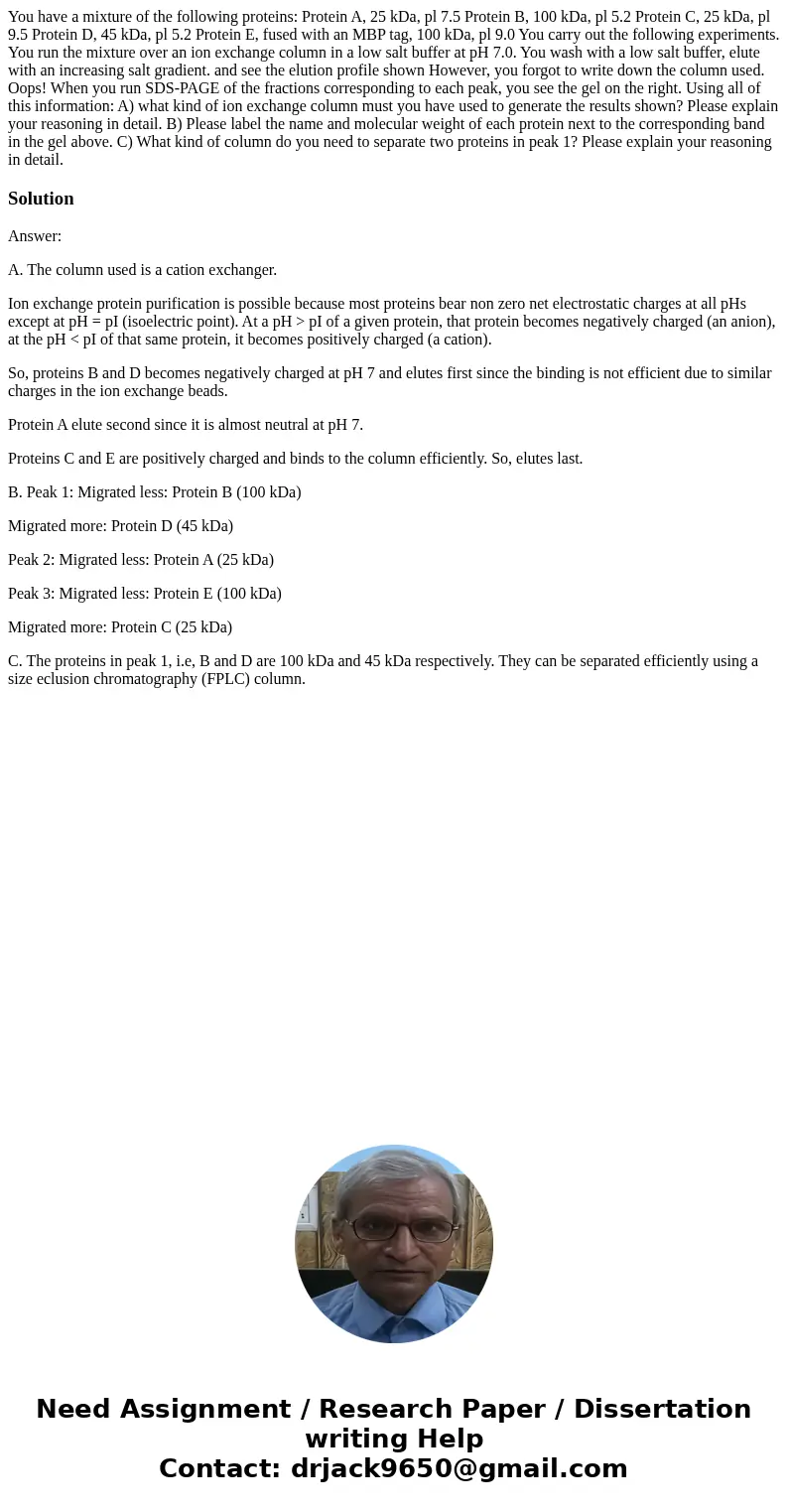You have a mixture of the following proteins Protein A 25 kD
Solution
Answer:
A. The column used is a cation exchanger.
Ion exchange protein purification is possible because most proteins bear non zero net electrostatic charges at all pHs except at pH = pI (isoelectric point). At a pH > pI of a given protein, that protein becomes negatively charged (an anion), at the pH < pI of that same protein, it becomes positively charged (a cation).
So, proteins B and D becomes negatively charged at pH 7 and elutes first since the binding is not efficient due to similar charges in the ion exchange beads.
Protein A elute second since it is almost neutral at pH 7.
Proteins C and E are positively charged and binds to the column efficiently. So, elutes last.
B. Peak 1: Migrated less: Protein B (100 kDa)
Migrated more: Protein D (45 kDa)
Peak 2: Migrated less: Protein A (25 kDa)
Peak 3: Migrated less: Protein E (100 kDa)
Migrated more: Protein C (25 kDa)
C. The proteins in peak 1, i.e, B and D are 100 kDa and 45 kDa respectively. They can be separated efficiently using a size eclusion chromatography (FPLC) column.

 Homework Sourse
Homework Sourse